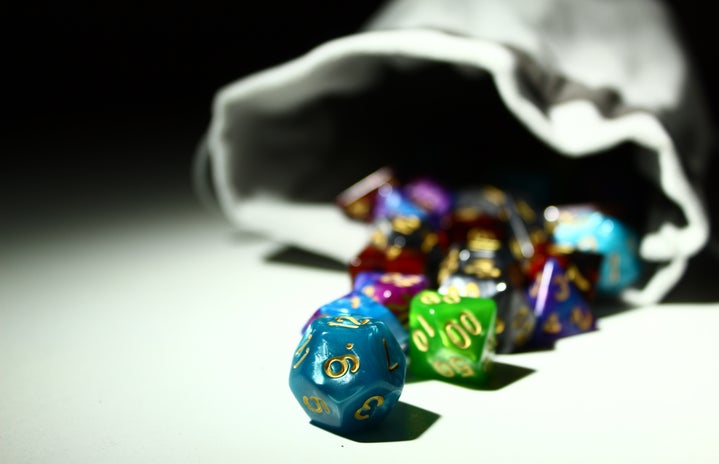When I was growing up, I prided myself on being “not like other girls.” Whether it was the fact that I grew up with a feminine sister and wanted to distinguish myself from her, the fact that all of my favorite characters were tomboys or the inherent misogyny in western society, I was not a fan of femininity. I hated all things pink and frilly, I despised wearing makeup and I refused to shave my legs or wear tight-fitting clothing in order to prove a point. I thought that I had it all figured out, and then I joined my friend’s Dungeons and Dragons campaign.
Since I come from a pretty nerdy family, I’ve played D&D for much of my life. I found early on that I liked playing characters different to myself. I’m pretty intelligent, so I like playing characters that are…not. I have no physical prowess (unless you count mock trial as a sport), so I like playing characters that are extremely athletic. And I’m a relatively awkward introvert, so I like playing charismatic, extroverted characters.
When I was creating my character for my friend’s campaign, I decided to bring my femininity into it. I present on the more masculine side for a cisgender woman: I have short hair, small(er) tits and I refuse to wear a shirt if it isn’t sleeveless. So, to continue my tradition, I tried to make a character as different from me as possible. Thus, Valentina “Tina” Fae was born.
Tina is a 2’8 gnome barbarian. She’s hyper feminine—wearing only the pinkest and frilliest of clothes—buff, extroverted and…intellectually challenged. She was, for all intents and purposes, a joke. I created her to have some fun with my friends and laugh at how stupid this gnome was.
And then something happened that I never could have expected.
I started seeing more and more of myself in Tina. Okay, I didn’t like the dresses and I knew how to do basic addition. But as I played her, I started to see deeper into this character. I saw myself in her loyalty, her excitability, even her trauma. I realized that everything that separated Tina and I was just on a surface level. Underneath the frilly dresses, we had more in common than I ever could have realized.
Playing Tina, something clicked. I realized that all of these things that I hated for so long and saw as inferior—dresses, frills, makeup, etc.—were all shallow differences. They were just preferences. They didn’t actually mean anything, not after you could see the person behind them. Despite what the movies tell us, a woman who wears skirts and lipstick is every bit as badass as one who wears cargo pants and carries a 22-caliber pistol.
So, this is my ode to Valentina Fae. Because of this stupid little gnome, I’ve been able to start evolving my views on femininity. Some things aren’t changing anytime soon. Shaving my legs is tedious and I still prefer blue over pink. But I’ve come to realize that I really like wearing crop tops and earrings. And that doesn’t make me any less or more than a woman who doesn’t do those things. At the end of it all, femininity doesn’t equate to placidity or stupidity. Femininity—in all of the ways that it’s embraced—is something to be admired, loved and preserved.



